
Throwing The First Stone
Will anyone show up to the digital mic party? The Angus & Julia Stone tour might be the warm-up gig the industry needs.
Show Photos: Michelle Pitiris
“It’s like the party’s at seven o’clock. Right now it’s four o’clock. You’re dressed, standing at the door, but the party hasn’t started.” That’s Sennheiser Australia MD Bjorn Rennemo Henriksen’s high school movie take on the state of digital mics. It’s been well over a decade since Beyerdynamic sent out the invitations with its AES3-outputting MCD100. So if we’re only a few hours away from the main event, we should probably be seeing more adoption of the digital mic-specific AES42 standard by now.
But that’s not really happening. The number of microphone manufacturers jumping onboard the digital microphone standard is best described as a handful. Neumann, and its parent company Sennheiser, have been left holding the bag. With Schoeps — the only other real participant — looking more interested in the Ravenna AES67-compatible, Audio-over-IP digital standard. So far other big players like Shure, Rode, Audio-Technica, EV, DPA — the list goes on — are looking like no-shows. And early adopter, Beyerdynamic, has backed away from the category completely.
It’s hard to say exactly why AES42 hasn’t really hit its stride. When you look at what Mode 2 (second generation) digital mic systems are capable of, they’re essentially next-level tools for ‘getting it right at the source’. The beauty of a digital mic system is it eliminates the typical mic cable separation between analogue microphone, analogue preamp and digital converter, and the problems associated with trying to match each piece of gear’s performance to suit the others. Instead of a preamp trying to cater to all kinds of microphone outputs and impedances, and likewise with converters for preamps, the dynamic range of a capsule can be directly matched to its appropriate preamp and converter. Delivering a noise-free digital presentation of what the capsule’s hearing direct from the XLR end of the microphone, without any induced noise or high frequency loss on its way to whatever rack, console or interface you’re sending it to. It sounds so simple, and convenient, especially since digital conversion inevitably happens in many recording/live chains anyway.
The AES42 spec is basically an AES3 signal strapped with a 10V phantom power supply. What’s more, Mode 2 microphones can accept both control and clock signals, so you can alter the mic’s sensitivity at the source, affecting its response and pattern, as well as make some DSP adjustments, like de-essing and compressing in the microphone.
It hasn’t really taken off though. Partly due to manufacturers’ cold feet, partly because of entrenched analogue workflows, difficulty of interfacing with pre-existing gear, and a general chicken-or-egg conundrum: ‘You make a digital mic first.’ ‘No, you make a digital interface first.’ What the whole AES42 revolution needs is more users outside of the field-recording business.

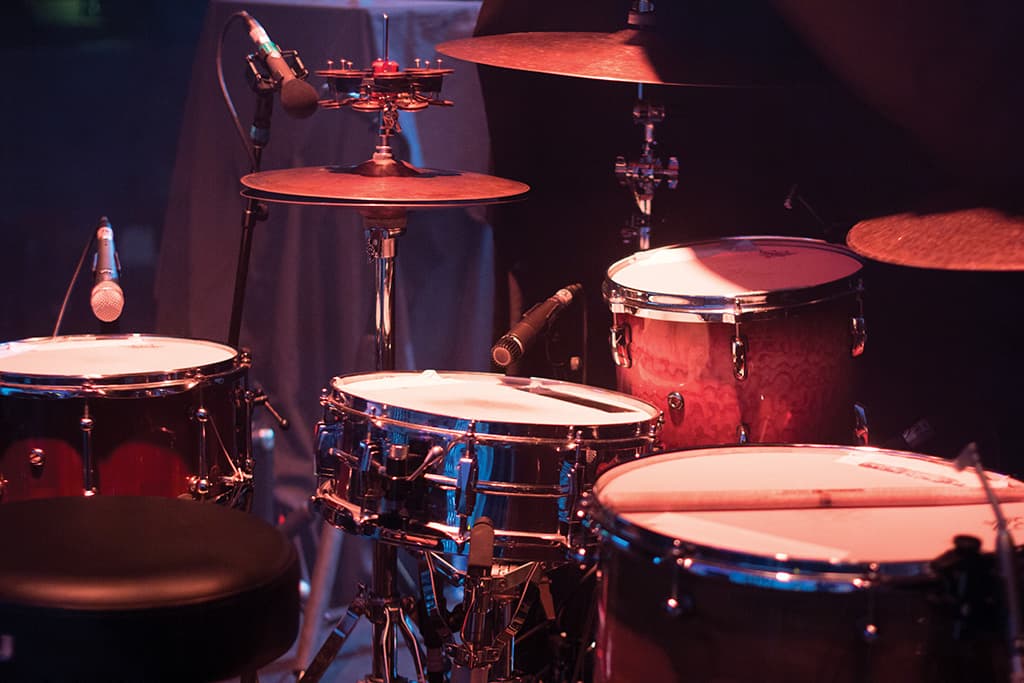
LIVENING UP THE CATEGORY
Which is where FOH engineer Adam Rhodes and monitor engineer Ben Shapiro come in. The pair are uniquely qualified, and well-connected enough, to integrate digital mics into a live show. The pair were offered a system to trial in Paris by an influential friend, the head of Neumann software design, but decided to hold off making the leap until they arrived back in Australia for the nation-wide Angus & Julia Stone tour.
Other than operating FOH, Rhodes has been a Sing Sing studio stalwart for over 20 years. So Neumann mics like the KM184 cardioid pencil condenser have been his stock in trade. Likewise, Shapiro has made a living out of mixing ears for fussy people: “I mixed Gotye for a couple of years, and Crowded House for a long time before that. The biggest problem with doing monitors for a guy like Wally [Gotye] is he’s so good with the micro details; I can’t keep up. It pushes you to do better work.”
The pair chose to take baby steps, opting to integrate just four Neumann KM184D mics into the setup: Two as overheads, one on ride, and the other on hi-hats. The choices were partly due to where the range of Neumann digital mics is most suited, and partly because they’re the least critical components if something falls over — they’d still have all the drums miked up without them.
Integrating AES42 microphones into a live setup at the moment isn’t that easy. Most console manufacturers have optional digital input cards you can add to a stage rack, but they’re typically only AES3 inputs. Digico is the only manufacturer with a digital mic-specific AES42 option in the live market, but as yet, hasn’t integrated all the control features at the console end; trim and phantom power only. Digico is talking the talk, but it’s another case of coming to the party ‘when the demand’s there’.
To get full control over AES42 features, you have to use an inline interpreter like the Neumann DMI-8, or the RME DMC-842, both of which spit out eight channels of AES3, and a bit more in the case of the RME.
Naturally, the Neumann mics came packaged with the DMI-8, which allows software control of all the internal mic features. Integrating it into the system was the job of JPJ freelancer, and tech guru Boz. Boz’s proximity was priority one for Rhodes and Shapiro, and why they waited to get back to Australia before diving in. Both couldn’t emphasise enough his importance to the system working, and their peace of mind. “It’s easy for us to say what we want to bring,” said Shapiro. “Boz took all the information away and packaged it together. We can mix anything you like, but we can’t do it without that guy.” See the ‘How Boz’ box for more detail on what Boz did to hook everything up.
I used to use the KM184s with Crowded House and The Oils… to have a better version of that with zero noise floor is phenomenal for in-ears



THAT EXTRA SIZZLE
Using digital mics obviously has to be more than just a gimmick, it has to sound as good as, or preferably better, than its analogue counterparts. Both Shapiro and Rhodes noted that while the sonic integrity of the digital Neumann’s held up, the ability to tailor the mic to the source was the real kicker.
Shapiro: “I used to use the KM184s with Crowded House and The Oils, they’re my favourite. And to have a better version of that with zero noise floor is phenomenal for in-ears. You can change the voltage and re-bias the capsule, slacken it off to reduce the amount of sensitivity and distortion. It’s very difficult when you’re running in-ears, everything’s so clinical. You want to lo-fi things, but with great information from the source. It’s not the same result if you use low-grade mics. The full Neumann console lets you de-ess and limit them, and focus the pattern exactly where you want. It’s just the future.”
Rhodes: “When we first turned the overheads on, the sensitivity was way too hot. I took them back 12dB, which made them incredibly usable, and haven’t trimmed on the console from then on. With the Neumanns, when Danny [drummer]’s playing a shaker it’s not pulling in the whole stage. They can be really localised because of the sensitivity adjustment. I can hear the sizzle cymbal all the way to the end, which often disappears after you hear the first little bit. The first few times I thought it was feedback.”
CLOSING IN ON THE SOURCE
That ability to dial in a mic’s sensitivity to match its source wouldn’t go astray elsewhere on stage. Angus & Julia Stone’s most popular song, Big Jet Plane, perfectly showcases not only a perennially catchy melody, but the delicate, whispery vocals of the siblings. Specifically Angus. “It’s probably the hardest gig I’ve ever done,” said Rhodes. “He has great tone, and his vocal is beautiful to mix, because it sits in with the band so well, but it’s uber quiet.” And because Angus stands directly in front of the drums, his vocal mic can act like a “third overhead,” said Rhodes. He can barely compress his vocal mic, because it will only bring up the rest of the stage. A Shure KSM9 hypercardiod mic alleviates some of the issue “because if he moves away,” said Rhodes. “He can’t hear himself in his ears.”
Sometimes you just can’t do much, and Rhodes is pretty philosophical about that. When Angus trails off, “I think it’s me that has to accept it more than anyone else,” reckoned Rhodes. “I don’t know if audiences even notice.”
The other new weapon on stage is the Shure Beta 181 side address condenser microphone up against Angus’ Vox amplifier grille. “I never thought I’d need to change from Shure SM57s on guitar amps,” said Rhodes. “But Angus has his guitar amps right next to the drum kit, so when he’s playing lighter parts and the beat’s quite large, trying to get a nice clean guitar sound out of the 57 was challenging. I’ve tried lots of condensers, but they just look straight through the amps and I can hear people whispering out the back. Whereas the 181 is so localised and picks up all the detail and warmth.”
One of the other challenging aspects of the gig is the extended dynamics in the performance. “In the bigger songs I have to use so much energy to get the drum kit through,” explained Rhodes. “Then when I pull everything back, the drums are overpowering me, and I’m chasing everything around.” Rhodes thought about why he’d never have that issue in the studio, and figured it was “because I’d run parallel compression and stick funky mics on the kit that I’d over-compress.”
Now he parallel compresses his entire kit, running it through two stereo buses with Avid’s Smack compressor on both. One is set to unity, and is just there for time alignment, then he smashes the second bus and brings it in underneath to taste. He also sticks a Shure SM58 ‘crush mic’ in the middle of the kit just above the kick, and pushes all the buttons in on his 1176 plug-in for a crushed kit sound to play with.
“As a young guy in the studio,” recalled Rhodes. “Ross Cockle was always on me about watching my VU meters and keeping the energy constant. This way I can still keep the drum kit upfront and powerful without soaking up the whole energy of the PA.”


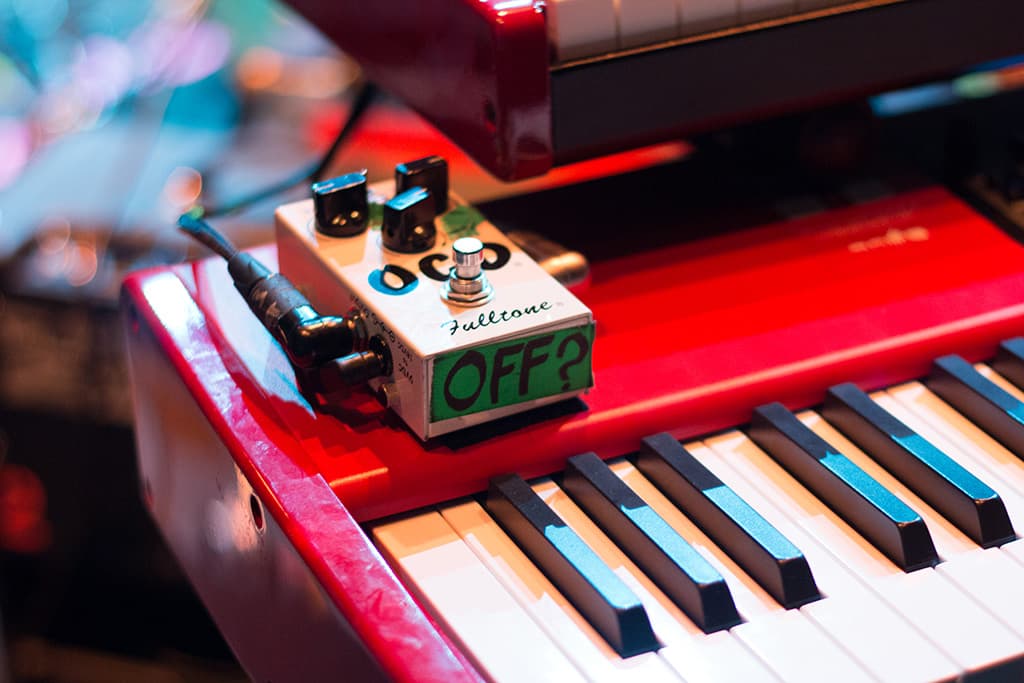

MONITORING LUXURY ITEMS
It’s best-of-the-best gear all round it seems. The tour uses top of the line Shure wireless products, the whole band is on Ultimate Ear 11 in-ears, and Shapiro’s monitor rack had a few more luxury items for Boz to interface. Shapiro runs a Crane Song Spider eight-channel digital output preamp. It’s sent dedicated splits of certain channels like vocals and a couple of guitars, and pumps AES3 back into Shapiro’s local rack. “It has tape emulation built in, but it’s much more effective than the plug-in,” said Shapiro. “It also has the Fat switch, which adds second and third harmonic distortion. So for guitars, it sounds fatter in the ears.”
He also has two Bricasti M7 reverbs, typically the preserve of high-end studios. “If we were doing wedges and conventional monitoring, I wouldn’t bother,” said Shapiro. “But the band wants super high-end ears and they’re very fussy about reverbs. They basically want the album, with all the effects and delays.” He uses the Bricastis to put them in a space, triggering different reverbs via MIDI to go along with his scene changes.
Replicating the album wasn’t just about approximating the effect, it was a directive. Shapiro tracked down the engineers who recorded the last albums and found out what gear they used. Then using Waves plug-ins, he transformed his Profile into a studio console. “All my drum channels are SSL, Neve for vocals, and API for guitars,” he said. “It took a lot of research and rehearsal time.”
He also has an Apogee Big Ben clock to sync all the digital bits ’n’ bobs, and a UAD Apollo interface in his rack. “It’s just for when I work offline,” explained Shapiro. “I record every show, so if I need to work on reverbs or something, I just roll the rack into my room, plug the hardware into my computer and dial up some mixes.” He also uses Shure shotgun microphones on each side of the stage to give some ambience to the band’s ears.
DIGITAL DIVIDENDS
Like every part of the tour setup, the digital mics had to do the job better than anything else can to become part of the package. Every piece of gear on the tour is chosen for a reason. Shapiro, for instance, likes the sound of the Digico over the now long-in-the-tooth Profile, and knows the Soundcraft Vi6 and Yamaha PM5D inside out. But he chose the Venue system because of its depth of automation and the ease of plug-in integration. Two things that helped him fulfil the objective, which in this case was to recreate the album.
The infusion of the Neumann digital mics’ pattern control and sensitivity adjustment gave Shapiro and Rhodes complete control over the drum sound without drawing the entire stage into the mics. And it’s the small things that can make all the difference when there’s 10,000 people in the house.


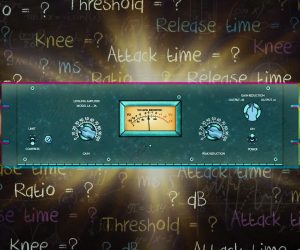

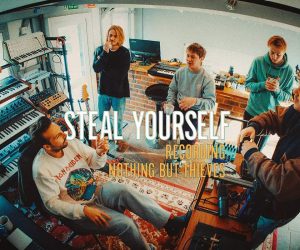







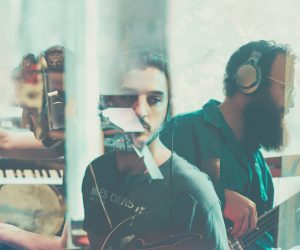



RESPONSES